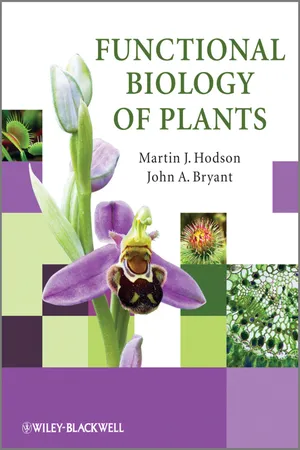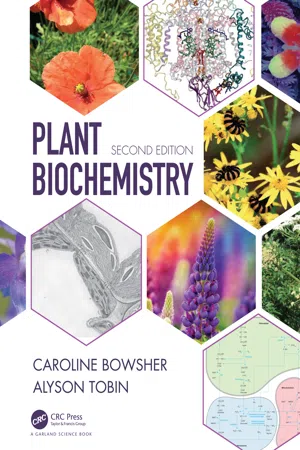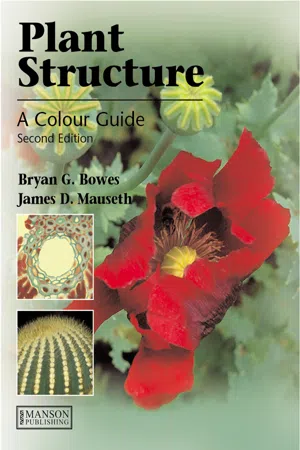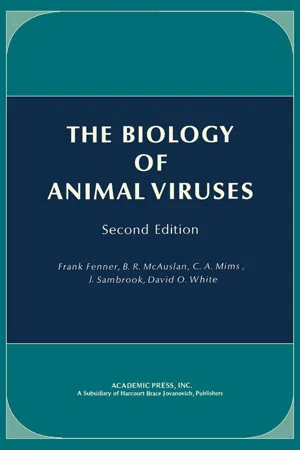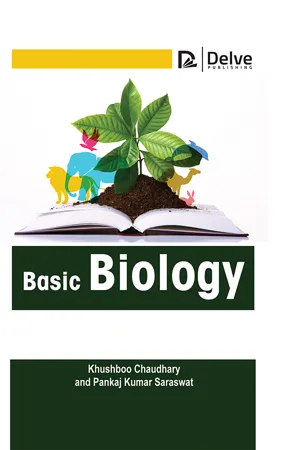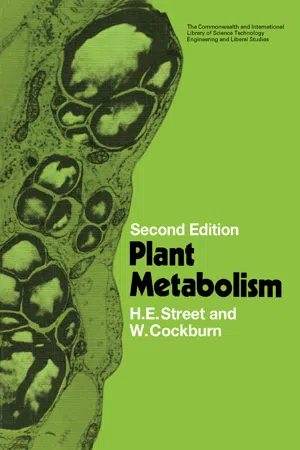Biological Sciences
Animal and Plant Cells
Animal and plant cells are the basic structural and functional units of living organisms. Both types of cells have a nucleus, cytoplasm, and cell membrane, but plant cells also have a cell wall and chloroplasts for photosynthesis. Animal cells are generally round and irregular in shape, while plant cells are more rectangular and have a fixed shape due to the presence of a cell wall.
Written by Perlego with AI-assistance
Related key terms
1 of 5
11 Key excerpts on "Animal and Plant Cells"
- Gabrielle I. Edwards, Cynthia Pfirrmann, Barron's Educational Series(Authors)
- 2021(Publication Date)
- Barrons Educational Services(Publisher)
3THE CELL: BASIC UNIT OF LIFE
WHAT YOU WILL LEARN
In this chapter, you will review the structure and function of cells and the essential roles that cells play in the life of an organism. SECTIONS IN THIS CHAPTER•The Cell as a Basic Unit•Parts of a Cell•Comparison of Plant and Animal Cells•Organization of Cells and Tissues•Cell Reproduction•Review Exercises•Connecting to Life/Job Skills•Chronology of Famous Names in BiologyThe Cell as a Basic Unit
CELL CONCEPT
The body of a living organism is built of units called cells. All living things are similar in that they are composed of one or more cells. The body of a unicellular organism is composed of one cell. Most plants and animals are multicellular, having a body made of numerous cells.During the years 1838 and 1839, the cell theory was pioneered by two eminent scientists of the day. Matthias Schleiden, a botanist, and Theodor Schwann, a zoologist, combined some of their fundamental ideas about the structure of plants and animals into what has developed into a basic concept of biological thought. The work of Rudolf Virchow completed the cell theory when, in 1858, he established that new cells could arise only from other living cells. The cell theory states that (1) that cells are the basic units of life; (2) that all plants and animals are made of cells; and (3) that all cells arise from preexisting cells.UNIT OF STRUCTURE
Microscopic examination of plant and animal parts indicates that the bodies of living organisms are composed of cells. Cells provide structure and form to the body. They appear in a variety of shapes: round, concave, rectangular, elongate, tapered, spherical, and others. Cell shape seems to be related to specialized function (Figure 3.1 ).Cells not only vary in shape, they also differ in size. Most plant and animal cells are quite small, ranging in size between 5 and 50 micrometers in diameter (Figure 3.2 ). Cells are measured in units that are compatible with modern microscopes. (See Table 3.1- eBook - ePub
- Martin J. Hodson, John A. Bryant(Authors)
- 2012(Publication Date)
- Wiley-Blackwell(Publisher)
Chapter 2 Introduction to Plant CellsThe previous chapter described the emergence in evolution of the angiosperms, the flowering plants. Much of the rest of this book deals with angiosperm function at the levels of organ and whole organism; we discuss the integration of growth and development, the angiosperm life cycle and the inter-organism interactions involved in various angiosperm lifestyles.However, in order to understand the plant as a functioning organism, it is necessary to have some knowledge of plant biology at the cellular and sub-cellular levels. Therefore, in this chapter and the next, we provide introductions to plant cells and to the major molecular activities in which the cells participate.2.1 Plant Cells
There is a sense in which there is no such thing as a ‘typical’ plant cell. Cell structure varies extensively according to the function of the cell in question. Nevertheless, it is helpful at this point to consider the main features of plant cells before looking at those features in more detail in subsequent sections. The features are illustrated diagrammatically in Figure 2.1 .Figure 2.1 Diagram of a plant cell.Author: Mariana Ruiz. http://en.wikipedia.org/wiki/File:Plant_cell_structure_svg.svgFirst, plant cells are characterized by being contained within a cell wall (section 2.2), composed mostly of polysaccharides and whose structure varies according to cell age and function. Inside the cell wall is the cell's outer membrane, the plasma membrane (section 2.3). In older cells, the next most obvious feature is the cell vacuole (section 2.8), a large aqueous space bounded by another membrane, the tonoplast. The vacuole's main functions are storage of particular solutes and the sequestration of hydrolytic enzymes. In vacuolated cells, the cytosol or cytoplasm is confined to a narrow zone between the vacuole and the plasma membrane (Figure 2.1 - eBook - ePub
- Caroline Bowsher, Alyson Tobin(Authors)
- 2021(Publication Date)
- Garland Science(Publisher)
3 Plant Cell Structure Key Concepts The internal organization of plant cells is dependent on membranes. Membranes, which consist of lipids and proteins, depend on a water phase for their organization into two-dimensional sheets. Proteins are targeted to specific membranes and confer specific properties on the membrane, including its permeability to solutes. The plasma membrane defines the outer boundary of the cell, regulates solute exchange, and participates in cell wall formation. Vacuoles can occupy a very large proportion of cell space in vegetative tissues and store a variety of compounds, including pigments, proteins, and osmotically active solutes. The endomembrane system consists of two distinct compartments: the endoplasmic reticulum and the Golgi. It provides a complex internal space bounded by a membrane that is involved in the synthesis of proteins, polysaccharides, and lipids, mostly destined for export from the cell. Cell walls act as mechanical supports and osmoregulators and define the shape of each cell, ultimately defining the shape of the whole plant. Cell walls regulate the flux of molecules between cells and provide transport pathways within the plant. In common with other eukaryotic cells, most plant cells contain nuclei, which are concerned with the storage and expression of genetic information; mitochondria, which are mostly involved in respiration; and peroxisomes, which have diverse roles in plants. Plastids are a defining feature of plant cells and are specialized for a variety of functions, notably photosynthesis in all green tissues. Plant Organs and Tissues Consist of Communities of Cells The previous chapter (Chapter 2) emphasized the importance of plant cell structure in the biochemical functioning of the whole plant. It is the unique challenges plants face as sessile organisms that need to, for example, harvest solar energy, acquire inorganic mineral elements, cope with loss of water, etc., that determine their cell structure - eBook - ePub
- Sue Dallas, Emily Jewell(Authors)
- 2014(Publication Date)
- Wiley-Blackwell(Publisher)
Section 1 Animal BiologyPassage contains an image
Chapter 1 Cells and Basic Tissues
In this chapter, the learning outcomes are:Summary- To understand the essential functions required to sustain life – MRS GREN
- To be able to identify the structure and function of animal cells and tissues
- To be able to recognize the diversity of animal cells and tissues in existence
What is biology?Biology is the study of life and living organisms
In order to be considered as a living organism, an organism must be able to perform all the following essential functions of life:What is life?- Movement – the organism is capable of moving itself or a part of itself.
- Reproduction – the organism is capable of reproducing itself so that the species doesn’t die out.
- Sensitivity – to stimuli in its surroundings in order to avoid life-threatening occurrences in the environment.
- Growth – sustained growth from within by a process which involves the intake of new materials from the outside and their incorporation into the internal structure of the organism.
- Release of energy from respiration – in a controlled manner and in a form usable by the organism. The process of respiration releases energy from food to sustain life.
- Excretion – the removal of the waste products of metabolism from the organism.
- Nutrition – taking in food materials which provide energy to maintain life and growth.
The cell is the simplest functional unit of all tissues and has the ability to perform individually all the essential life functions. Organisms may be single-celled or multi-celled. Within the multicellular organisms, the constituent cells show a wide range of specialisations. Cells can be viewed as the building blocks of the body, and so the following can be said:- Cells form…
- Tissues, and tissues form…
- Organs, and organs… join together to form systems within the body.
- Systems have a specific function to perform in the living organism.
The diversity of cellsCells are not all identical (Fig. 1.1 - eBook - ePub
- Laurie Ann Callihan(Author)
- 2013(Publication Date)
- Research & Education Association(Publisher)
The shape and size of cells can vary widely. The longest nerve cells (neurons) may extend over a meter in length with an approximate diameter of only 4–100 micrometers (1 millimeter = 1,000 micrometers, μm). A human egg cell may be 100 micrometers in diameter. The average size of a bacterium is 0.5 to 2.0 micrometers. However, most cells are between 0.5 and 100 micrometers in diameter. The size of a cell is limited by the ratio of its volume to its surface area. In the illustration below, note the variation of shape of cells within the human body:Fig. 3-1 Varying Cell Types. The six sketches of human cell types show some of the diversity in shape and size among cells with varying functions. The sketches are not sized to scale.Animal cells differ in structure and function from cells of plants, fungi, and protists. For example, the photosynthetic cells have the added job of producing food, so they are equipped with specialized organelles called chloroplasts. Plant cells also have a central vacuole and cell walls, structures not found in animal cells.Viruses are much smaller than even the smallest cells. Scientists do not agree as to whether viruses are actually alive. Although they can reproduce in host cells, they do not have the ability to conduct metabolic functions on their own. Virus structure consists of only a protein capsule, DNA, or RNA, and sometimes enzymes. Viruses survive and replicate by invading a living cell. The virus then utilizes the cell’s mechanisms to reproduce itself, sometimes destroying the cell in the process.PROPERTIES OF CELL MEMBRANESFig. 3-2 Viruses and Cells. Viruses are much smaller than cells, ranging from approximately 0.05–0.1 micrometers. The prokaryotic cell has no nucleus or other membrane-bound organelles and is approximately 1–10 micrometers in diameter. The eukaryotic cell has membrane-bound organelles, including a nucleus containing the chromosomes. Eukaryotic cells are approximately 10–100 micrometers in diameter.The cell membrane is an especially important cell organelle with a unique structure that allows it to control movement of substances into and out of the cell. Made up of a fluid phospholipid bilayer , proteins, and carbohydrates, this extremely thin (approximately 80 angstroms) membrane can only be seen clearly with an electron microscope. The selective permeability of the cell membrane serves to manage the concentration of substances within the cell.Fig. 3-3 Cell Membrane. A phospholipid bilayer with embedded globular proteins. - eBook - ePub
- Andrew Lack, David Evans(Authors)
- 2021(Publication Date)
- Taylor & Francis(Publisher)
Section C - Plant cellsC1 THE PLANT CELLKey Notes
Cell structure
The plant cell has a cell wall and plasma membrane enclosing the cytoplasm. Organelles, bounded by membranes, occur within the cytoplasm and are supported and moved by the cytoskeleton. The nucleus contains DNA and nucleoli. Many plant cells have a large vacuole.Cell membranes
The endomembrane system of the cell is involved in synthesis and transport. The nucleus is surrounded by a nuclear envelope. The endoplasmic reticulum (ER) is divided into perinuclear ER and cortical ER, and may be smooth or rough (coated with ribosomes). Material from the ER is modified and sorted in the Golgi apparatus (GA) from which it travels in vesicles to the plasma membrane or the vacuole.Organelles of metabolism
Mitochondria generate adenosine triphosphate (ATP) from stored food reserves. Chloroplasts carry out photosynthesis. Microbodies include peroxisomes containing catalase and glyoxysomes containing enzymes of lipid biosynthesis.The cell wall
The cell wall is a dynamic, metabolic structure made up predominantly of carbohydrate. Adjoining cells are interconnected by plasmodesmata, in which membranes bridge the wall. Everything within the plasma membrane is the symplast; outside it is the apoplast, which is a water-permeated space, in which hydrophilic molecules are dissolved.Related topics
The cell wall (C2) Nucleus and genome (C5) Cell division (C6) Membranes (C4) Plastids and mitochondria (C3)Cell structure
Plant cells show a wide range of shapes and internal structures, depending on their function.Figure 1illustrates the key features of a typical plant cell. Other cells, such as reproductive cells and conducting cells may be very different in appearance. It consists of a cell wall in close contact with a plasma membrane surrounding the cytoplasm, which is made up of aqueous fluid cytosol and many organelles. These organelles are supported and moved by a meshwork of fine protein filaments, the cytoskeleton, which includes microtubules made up of the protein tubulin and microfibrils made up of the protein actin. The nucleus contains genetic information in chromosomes and nucleoli that contain machinery for the production of ribosomes - eBook - ePub
- Bryan G. Bowes, James D. Mauseth(Authors)
- 2008(Publication Date)
- CRC Press(Publisher)
CHAPTER 2The Plant Cell
INTRODUCTION
Even in a small green plant such as Lemna (3 ) there are millions of cells, each delimited from its neighbours by a cell wall. The vast majority of these cells are differentiated and, in the vascular plant, often perform specialized functions such as the transportation of water and soluble nutrients in the xylem and phloem (20 , 21). All differentiated cells originate from actively dividing meristematic cells (47 ); these have thin primary walls investing protoplasts with dense cytoplasm (48 ). These cells are located in the apical (28 ) and lateral meristems (10 , 49) as well as other more localized regions such as meristemoids (50 ).Although most living cells are uninucleate (51 ), several or many nuclei may occur in certain types (52 ), while sieve elements (20 ) contain protoplasts (53 ) in which the nucleus and several other organelles have been broken down. During the differentiation of most sclerenchyma and tracheary elements, the protoplasts undergo programmed cell death (54 –56 ); at maturity only their walls, greatly thickened by the accretion of secondary wall deposits, remain (20 , 57). The lumina of such dead cells (58 ) form a significant part of the plant apoplast system, while the walls and intercellular spaces constitute the remainder. The protoplasts of the living cells form the symplast (58 ) and these protoplasts are in continuity with each other via the plasmodesmata (58 –60 ). Between 1000 and 10,000 such protoplasmic connections occur per cell, but it seems that only relatively small molecules (with a molecular weight of less than 1000) are able to pass through them.The fine structure of a partly differentiated cell is illustrated diagrammatically in 61 . The thin external primary wall is delimited from the protoplast by the membranous plasmalemma. Several large organelles are present including the nucleus, several vacuoles, and a number of chloroplasts. Normally under the light microscope (LM), only the wall and these larger organelles would be apparent (47 , 62). However, with the greater resolution of the transmission electron microscope (TEM), mitochondria, endoplasmic reticulum, dictyosomes, ribosomes, microtubules, and plasmodesmata are also distinguishable (61 ). Most of these organelles are membrane-bounded (51 , 55 , 59 –61 , 63 - eBook - PDF
- Frank J. Fenner, B. R. McAuslan, C. A. Mims(Authors)
- 2013(Publication Date)
- Academic Press(Publisher)
STRUCTURE OF AN UNDIFFERENTIATED ANIMAL CELL Our knowledge of the ultrastructure of cells comes, for the most part, from electron microscopy. Cells in tissue culture, with which most studies of viral multiplication are carried out, usually appear undifferentiated in electron micro-graphs (Fig. 4-1). Animal cells are bounded externally by the cytoplasmic (or plasma) mem-brane, within which is contained the cytoplasm and a number of cytoplasmic organelles, the mitochondria, ribosomes, Golgi apparatus, endoplasmic reticulum, and lysosomes being the most prominent. In the cells of higher organisms the genetic apparatus is concentrated in the nucleus, which also contains organelles called nucleoli. 155 156 4. Structure and Function of the Animal Cell FIG. 4-1. Diagram of an undifferentiated animal cell, showing various or-ganelles. G, Golgi appa-ratus; er, endoplasmic re-ticulum; I, lysosome; m, mitochondrion; nm, nu-clear membrane; no, nu-cleolus; r, ribosomes. THE CYTOPLASMIC MEMBRANE Structure The cytoplasmic membrane (plasma membrane) plays an important part in many aspects of cell behavior. Not only does it form the retaining sheath which encloses the cellular constituents, but also it is responsible for creating and maintaining concentration gradients of many different types of cellular metabo-lites. Furthermore, there is growing evidence that division and differentiation of cells are influenced by events which occur at the membrane, and most pertinent to this book, the membrane provides the first surface that a virus encounters when it infects a cell. Unlike some bacteriophages, which use enzymes to digest the rigid bacterial cell wall and a contractile protein to inject their genetic mate-rial into the cell, most animal viruses are taken into the cell by an active process of engulfment (Chapters 5 and 6). - eBook - PDF
- Khushboo Chaudhary, Pankaj Kumar Saraswat(Authors)
- 2023(Publication Date)
- Delve Publishing(Publisher)
Endoplasmic Reticulum It is two types • Rough ER: with ribosomes. • Smooth ER: with no visible ribosomes. • Golgi apparatus: Sorts proteins made by the ribosomes and sends them to needed places in the cell. • Lysosomes- Organelles that are filled with digestive enzymes to remove waste and invading bacteria. Mitochondria: It referred to as the “powerhouse” of the cell release energy for the cell. It converts the energy stored in glucose into ATP for the cell. Basic Biology 156 Vacuoles are fluid which filled organelles enclosed by a membrane. It is store materials such as food, sugar, water, and waste products. Eukaryotic plant cell Plant cells are also eukaryotic cells, but plant cells contain some organelles that are not found in animal cells. Plant cell organelles Cell wall It is a rigid wall outside the plasma membrane. It provides the cell with extra support. Chloroplasts It captures light and energy; and converts it into chemical energy. Chlorophyll It is the green pigment found inside the chloroplast. Plastids The organelles that store things such as food in the plant cell. 21. CELL ORGANELLE PLASMA MEMBRANE, ENDOPLASMIC RETICULUM, MITOCHONDRIA, CYTOSKELETON, NUCLEUS AND GOLGI APPARATUS. Introduction The basic structural and functional unit of life. The smallest units that display the characteristics of life, i.e. reproduction, metabolism, response to stimuli. Plasma membrane is selectively permeable boundary between the cell and the environment. Nucleus is regulatory center of the cell. Cytoplasm is everything between the plasma membrane and the nucleus (fluid + organelles). Cell Biology 157 Plasma Membrane Structure is phospholipd bilayer with proteins embedded in, and attached to, the inner (intracellular) and outer (extracellular) surfaces. Function • Selectively permeable barrier: controls what enters and leaves the cell. - eBook - PDF
- H. E. Street, W. Cockburn(Authors)
- 2014(Publication Date)
- Pergamon(Publisher)
C H A P T E R 2 Cell Structure and Function The vital processes of the individual cells form the first indispensable and fundamental basis for both vegetable physiology and comparative physiology in general M. J. Schleiden (1838) We have seen that all organisms consist of essentially like parts y the cells . . . each cell . . . capable of developing independently if only there be provided the external conditions under which it exists in the organ-ism. . . . The question as to the fundamental power of organised bodies resolves itself into that of the individual cells Theodore Schwann (1839) INTRODUCTION THESE writings of the botanist Schleiden and the zoologist Schwann, from which our above quotations are taken, formed the first clear expression of the view that the properties of complex organisms are an expression of the separate activities of their cells, each cell living in the special environment created by the association together of the total cell population. This enunciation of the cell theory had, as its background, the brilliant researches of earlier microscopists right back to the first use of the term cell by Robert Hooke in 1665. The early microscopists recognised that living material was built up from, or divided into, minute compartments or cells but not until the 19th century were microscopes of sufficient resolving power available for the living contents of cells to be observed. Robert Brown first observed the nucleus in the epidermal cells of certain plants in 19 - eBook - ePub
- Patricia Barnes-Svarney, Thomas E. Svarney(Authors)
- 2014(Publication Date)
- Visible Ink Press(Publisher)
Basics of Biology .”)Mitochondria are essential parts of eukaryotic cells. They produce lipids and ATP and are necessary for protein synthesis.How many mitochondria are in a cell?
The number of mitochondria varies according to the type of cell. The number ranges between one and 10,000, but averages about 200. For example, each cell in the human liver has over 1,000 mitochondria; cells with high energy requirements, such as muscle cells, may have many more mitochondria.CELL WALLS AND MEMBRANES
What groups of organisms have a cell wall?
A cell wall is present in organisms in the kingdoms Archaebacteria, Eubacteria, Protista, Fungi, and Plantae (bacteria, protists, fungi, and plants). Animals are the only organisms that do not have a cell wall. (For more about the classification of organisms, see the chapter “Basics of Biology .”)In fact, the cell wall is one of the features of all the other organisms’ cells that distinguish them from animal cells. For example, plant walls protect the plant cell; they also help maintain its shape and consist mainly of cellulose in a matrix of protein and sugar polymers. The cell walls in prokaryotes (for example, bacteria) also define the cell’s shape and give rigidity to the cell. Though unlike plant cell walls, bacterial cell walls consist mainly of peptidoglycans—(polysaccharide chains [amino sugars] cross-linked by small peptides)—and not cellulose.What’s the difference between a primary and secondary cell wall?
A primary cell wall is laid down during cell division and is relatively thin and flexible in order to accommodate cell enlargement and elongation. As the cell matures and stops growing, the wall strengthens. A secondary cell wall is present between the plasma membrane and primary cell wall in some cells and is often deposited in several laminated layers. This type of cell wall is strong and durable and provides both cell protection and support; for example, wood consists mainly of secondary cell walls.
Index pages curate the most relevant extracts from our library of academic textbooks. They’ve been created using an in-house natural language model (NLM), each adding context and meaning to key research topics.

